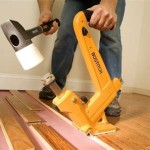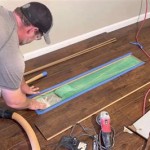Cost To Replace Flooring In House: A Comprehensive Guide
Replacing flooring in a house is a significant home improvement project that can dramatically alter the aesthetic appeal and functionality of a space. Understanding the multifaceted costs involved is crucial for effective budgeting and project planning. These costs can range widely depending on several factors, including the type of flooring material chosen, the size of the area being covered, the existing condition of the subfloor, and whether professional installation is required.
This article will provide a detailed overview of the various expenses associated with replacing flooring, exploring different flooring options and their respective price points, labor costs, and potential hidden costs. By examining these elements, homeowners can gain a clearer understanding of the financial commitment required to successfully complete a flooring replacement project.
Factors Influencing Flooring Replacement Costs
Several key factors contribute to the overall cost of replacing flooring. These factors can be broadly categorized as material costs, labor costs, and subfloor preparation expenses. Each of these categories warrants careful consideration during the budgeting process.
Material Costs: The cost of the flooring material itself is a primary driver of the total project expense. Different flooring types vary significantly in price. For example, basic vinyl flooring is generally more affordable than hardwood or tile. Therefore, the choice of material will largely determine the overall cost. The quality of the material also plays a role; higher-quality materials typically command a higher price but may offer greater durability and longevity, potentially leading to long-term cost savings.
Labor Costs: The cost of professional installation can also significantly impact the overall project budget. Labor rates vary depending on the complexity of the installation, the experience of the installer, and the geographic location. Some flooring types, such as hardwood or tile, require specialized skills and therefore command higher labor costs. The size of the area being covered will also influence the labor cost, as larger areas necessitate more time and effort to install. Homeowners should obtain multiple quotes from qualified installers to ensure they are receiving a competitive price.
Subfloor Preparation: The condition of the subfloor beneath the existing flooring can also affect the cost of replacement. If the subfloor is uneven, damaged, or requires repair, additional work will be necessary to prepare it for the new flooring. Subfloor preparation may involve leveling, patching, or even replacing sections of the subfloor entirely. These additional steps can add significantly to the overall project cost.
Other factors that can influence costs include the removal and disposal of existing flooring, the need for any permits or inspections, and the cost of any necessary tools or equipment. Understanding these factors is essential for developing an accurate budget and avoiding unexpected expenses during the project.
Exploring Different Flooring Options and Their Costs
The market offers a vast array of flooring options, each with its unique characteristics, advantages, and cost implications. Examining the most popular choices and their associated price ranges can aid in making informed decisions.
Hardwood Flooring: Hardwood flooring is a popular choice for its durability, aesthetic appeal, and long-term value. However, it is also one of the more expensive flooring options. The cost of hardwood flooring varies depending on the type of wood (e.g., oak, maple, cherry), the grade of the wood, and whether it is solid or engineered hardwood. Solid hardwood is typically more expensive than engineered hardwood but can be refinished multiple times, extending its lifespan. Installation costs for hardwood flooring are also typically higher due to the specialized skills required.
Laminate Flooring: Laminate flooring is a synthetic flooring option that mimics the appearance of hardwood or tile. It is generally more affordable than hardwood and easier to install, making it a popular choice for budget-conscious homeowners. Laminate flooring is also relatively durable and resistant to scratches and stains. However, it is not as durable as hardwood and cannot be refinished. The cost of laminate flooring varies depending on the thickness of the planks and the quality of the finish.
Vinyl Flooring: Vinyl flooring is a versatile and affordable flooring option that comes in a variety of styles, including sheet vinyl, vinyl tiles, and luxury vinyl planks (LVP). Vinyl flooring is waterproof, making it a good choice for bathrooms and kitchens. It is also relatively easy to install, especially LVP, which often features a click-lock system. The cost of vinyl flooring varies depending on the type of vinyl and the quality of the product.
Tile Flooring: Tile flooring is a durable and water-resistant option that is commonly used in bathrooms, kitchens, and entryways. Tile comes in a variety of materials, including ceramic, porcelain, and natural stone. Porcelain tile is generally more durable and water-resistant than ceramic tile, but it is also more expensive. Natural stone tile, such as granite or marble, is the most expensive option but offers a unique and luxurious look. Installation costs for tile flooring are typically higher due to the specialized skills required for cutting and laying the tile.
Carpet: Carpet is a soft and comfortable flooring option that is commonly used in bedrooms and living rooms. Carpet comes in a variety of materials, including nylon, polyester, and wool. Wool carpet is the most expensive option but is also the most durable and luxurious. Installation costs for carpet are typically lower than for hardwood or tile. However, carpet requires regular cleaning and can be susceptible to stains and allergens.
The best flooring option for a particular house depends on a variety of factors, including budget, lifestyle, and aesthetic preferences. By carefully considering these factors and researching different flooring options, homeowners can choose a flooring that meets their needs and fits their budget.
Breaking Down the Costs: A Detailed Estimate
To provide a more concrete understanding of the costs associated with replacing flooring, it is helpful to break down the potential expenses in detail. This section will provide estimated cost ranges for different aspects of the project, allowing homeowners to develop a more accurate budget.
Material Costs (per square foot):
- Vinyl Flooring: $2 - $7
- Laminate Flooring: $3 - $10
- Engineered Hardwood Flooring: $5 - $15
- Solid Hardwood Flooring: $8 - $25
- Ceramic Tile Flooring: $3 - $10
- Porcelain Tile Flooring: $5 - $15
- Carpet: $2 - $8
Labor Costs (per square foot):
- Vinyl Flooring Installation: $1 - $3
- Laminate Flooring Installation: $2 - $5
- Engineered Hardwood Flooring Installation: $3 - $8
- Solid Hardwood Flooring Installation: $5 - $12
- Ceramic Tile Flooring Installation: $5 - $15
- Porcelain Tile Flooring Installation: $7 - $20
- Carpet Installation: $1 - $4
Subfloor Preparation Costs:
Subfloor preparation costs can vary widely depending on the condition of the existing subfloor. Minor repairs, such as patching small holes or cracks, may cost only a few hundred dollars. However, more extensive repairs, such as leveling an uneven subfloor or replacing damaged sections, can cost several thousand dollars. It is essential to have the subfloor inspected by a qualified professional to determine the extent of the necessary repairs.
Other Potential Costs:
- Removal and Disposal of Existing Flooring: $1 - $3 per square foot
- Baseboard Removal and Reinstallation: $1 - $3 per linear foot
- Moving Furniture: $50 - $500 (depending on the amount of furniture and the distance it needs to be moved)
- Permits and Inspections: $50 - $500 (depending on local regulations)
Example Scenario:
Consider a homeowner who wants to replace the flooring in a 200-square-foot living room with laminate flooring. The cost breakdown might look like this:
- Laminate Flooring Material (at $5 per square foot): $1,000
- Laminate Flooring Installation (at $3 per square foot): $600
- Removal and Disposal of Existing Flooring (at $2 per square foot): $400
- Subfloor Preparation (minor patching): $200
- Baseboard Removal and Reinstallation: $150
Total Estimated Cost: $2,350
This is just an example, and the actual cost may vary depending on the specific circumstances of the project. However, it provides a general idea of the different cost components involved and how they can add up.
By carefully considering all of these factors and obtaining multiple quotes from qualified professionals, homeowners can develop a realistic budget and successfully complete their flooring replacement project.

How Much Does Flooring Installation Cost 2024 Guide

Floor Replacement Cost To Refloor A House Fixr

How Much Does Flooring Installation Cost 2024 Guide

What Is The Cost To Install Flooring 2024 Calculator

How Much Does Flooring Installation Cost 2024 Guide

How Much Should Laminate Flooring Fitting Cost In 2024 Checkatrade

How Much Does It Cost To Install Flooring Lx Hausys

How Much To Replace Flooring In A 1 200 Sq Ft House Estimate Florida Consulting

How Much Does Flooring Installation Cost 2024 Guide

How Much Does It Cost To Replace Your Kitchen Floor
Related Posts








